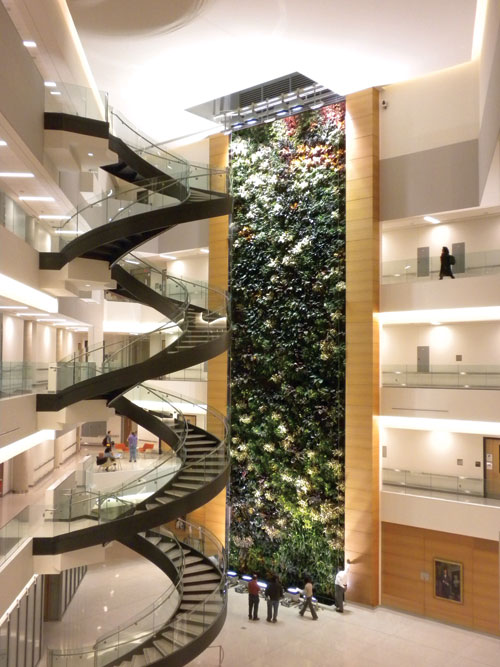Indoor Air Biofilters Deliver Clean Air Naturally
Learning Objectives:
- Summarize and explain the principles of indoor air biofiltration that affect indoor air quality.
- Analyze and compare the different basic components of an indoor air biofilter system.
- Theorize and predict the impact of a biofilter on indoor air quality in buildings.
- Specify and conceptually design an appropriate indoor air biofilter into a building to optimize performance.
Credits:
It is commonly noted that people currently spend 80 to 90 percent of their time indoors. That means we are breathing indoor air and, as a result, indoor air quality (IAQ) has been the focus of numerous studies, standards, and programs that seek to create healthy indoor environments. Common approaches to achieving better IAQ results, particularly in green building design, include careful selection of materials used and increasing ventilation rates. Over the last decade or two, there is also another option that is emerging, namely the use of a plant-based indoor air biofilter. This completely biological (i.e. natural) method of maintaining the quality of indoor air has become recognized as an exceptionally functional and very aesthetic system that can truly enhance indoor environments in many ways.
PRINCIPLES BEHIND INDOOR
AIR BIOFILTRATION
The science behind indoor air biofilters had its start back in 1994 at the Controlled Environment Systems research facility at the University of Guelph in Ontario, Canada. Early research was funded by the Ontario Center of Excellence (OCE) and by the European and Canadian Space agencies. The group gained worldwide recognition for their use of biological systems to improve indoor air quality. Some of the principles that were identified and developed since then are discussed below.
The Nature of ContaminantsIndoor air can be contaminated by any number of things thus reducing its quality and beneficial aspects. For purposes of our discussion, a contaminant is simply defined as anything in the air that we breathe that is detrimental to our health or well-being. It could be determined to be downright harmful due to its inherent make-up as a hazardous substance. Or it could be an otherwise common substance that is a concern due to its level of concentration in the air which exceeds the ability of a human body to deal with it. Hence a contaminant can take several forms.
 |
A five-story indoor air biofilter at Drexel University assisted in this academic building’s LEED Gold certification. Photo courtesy of Nedlaw Living Walls Inc. |









